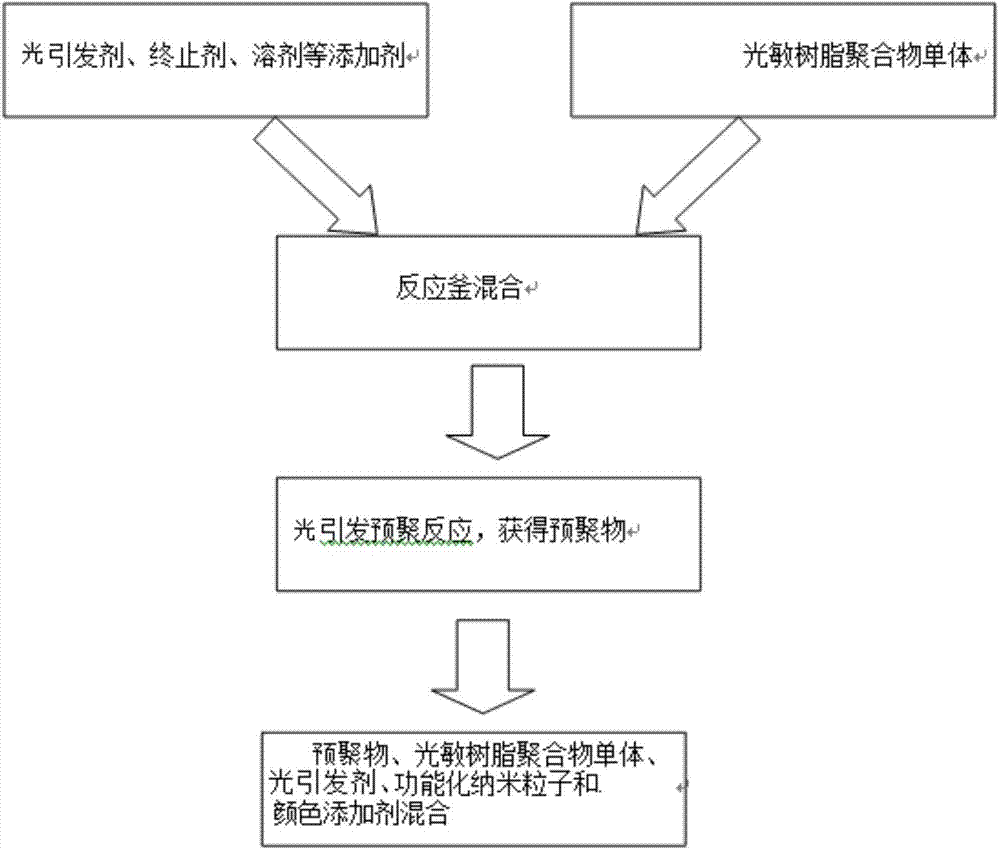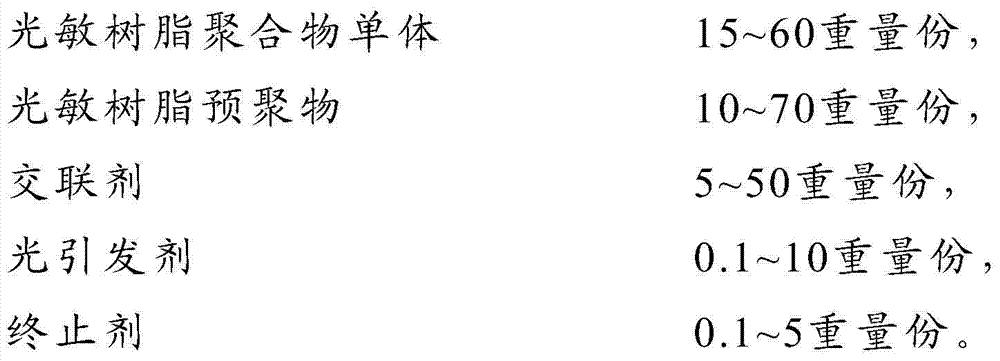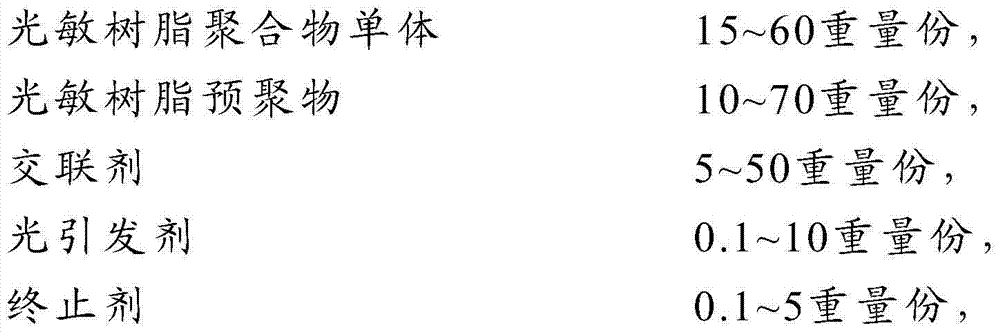3D printing core material
A 3D printing and raw material technology, applied in the field of material chemistry, which can solve problems such as low strength and difficult coloring
- Summary
- Abstract
- Description
- Claims
- Application Information
AI Technical Summary
Problems solved by technology
Method used
Image
Examples
Embodiment 1
[0175] (1) Preparation of prepolymer: 48.8g photosensitive resin polymer monomer diethylene glycol dimethacrylate, 0.2g photoinitiator Irgacure369 (BDMB) and 1.0g terminator hydroquinone and 10.0g crosslinking The methyl etherified melamine was dissolved in 100mL of dichloromethane, and the prepolymerization reaction was carried out at 150°C to obtain a prepolymer with a polymerization degree of 50-200, and the viscosity of the prepolymer was about 10000cps;
[0176] (2) Combine the prepolymer prepared in (1) with 28.5g photosensitive resin polymer monomer diethylene glycol dimethacrylate, 0.3g photoinitiator Irgacure369 (BDMB), 1.0g terminator terephthalate Phenol, 10.0g cross-linking agent methyl etherified melamine, 1g functionalized nano-particle calcium carbonate (particle size 20-40nm), 1.0g color additive TiO 2 (particle size 20-40 μm) and 0.1 g of solubilizer octylphenol polyoxyethylene ether-10 were mixed at room temperature to prepare a 3D printing material.
[0177...
Embodiment 2
[0179] (1) Preparation of prepolymer: 60.0g photosensitive resin polymer monomer dipentaerythritol hexaacrylate, 2.0g photoinitiator 4-methylbenzophenone, 2.0g terminator sodium dimethyldithiocarbamate and Dissolve 5.0g of cross-linking agent methylated melamine in 200mL of chloroform, and carry out prepolymerization reaction at 100°C to obtain a prepolymer with a polymerization degree of 50-200, and the viscosity of the prepolymer is about 8000cps;
[0180] (2) the prepolymer prepared in (1) and 40.0g photosensitive resin polymer monomer dipentaerythritol hexaacrylate, 8.0g photoinitiator 4-methylbenzophenone, 3.0g terminator dimethyl Sodium dithiocarbamate, 5.0g crosslinking agent methylated melamine, 5.0g functionalized nanoparticle calcium phosphate (particle size 80-100μm), 5.0g color additive cobalt blue and 2.0g solubilizer fatty alcohol polyoxyethylene ether- 7. Mix at room temperature to prepare a 3D printing material, and the viscosity of the prepared 3D printing mat...
Embodiment 3
[0182] (1) Preparation of prepolymer: 10.0g photosensitive resin polymer monomer ethylene glycol methyl ether acrylate, 0.05g photoinitiator benzoin (Benzoin) and 1.0g terminator dimethyl dithioamino Sodium formate and 40.0g of cross-linking agent ethylenediamine were dissolved in 150mL of acetone, and prepolymerization was carried out at 80°C to obtain a prepolymer with a degree of polymerization of 50-200, and the viscosity of the prepolymer was about 3000cps;
[0183] (2) The prepolymer prepared in (1) and 40.0g photosensitive resin polymer monomer dipentaerythritol hexaacrylate, 0.05g photoinitiator benzoin (Benzoin), 2.0g terminator dimethyl disulfide Substituted sodium carbamate, 10.0g cross-linking agent ethylenediamine, 0.1g functionalized nano-particle nano-alumina (particle size 600-800nm), 0.5g color additive CuSO 4 Mix with 0.5g solubilizer Tween 80, and mix at room temperature to prepare a 3D printing material. The viscosity of the prepared 3D printing material is...
PUM
| Property | Measurement | Unit |
|---|---|---|
| Viscosity | aaaaa | aaaaa |
| Viscosity | aaaaa | aaaaa |
| Particle size | aaaaa | aaaaa |
Abstract
Description
Claims
Application Information
 Login to View More
Login to View More - R&D
- Intellectual Property
- Life Sciences
- Materials
- Tech Scout
- Unparalleled Data Quality
- Higher Quality Content
- 60% Fewer Hallucinations
Browse by: Latest US Patents, China's latest patents, Technical Efficacy Thesaurus, Application Domain, Technology Topic, Popular Technical Reports.
© 2025 PatSnap. All rights reserved.Legal|Privacy policy|Modern Slavery Act Transparency Statement|Sitemap|About US| Contact US: help@patsnap.com



